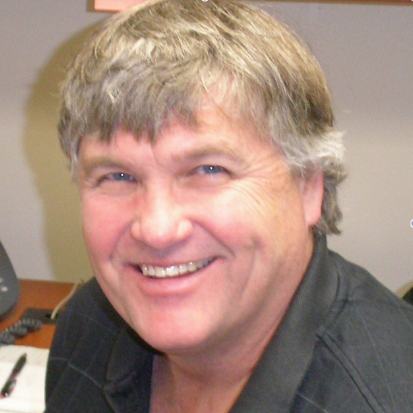
David A. Wink Jr., Ph.D.
- Center for Cancer Research
- National Cancer Institute
- Building 560, Room 31-93B
- Frederick, MD 21702-1201
- 301-846-7182
- wink@mail.nih.gov
RESEARCH SUMMARY
Over the course of the last decade it has become apparent that nitric oxide and other small redox-reactive molecules promote the progression of human cancers. Our research goals are focused on the identification of redox-related mechanisms and biomarkers expressed during chronic inflammation as it relates to cancer progression and poor clinical outcome. We are ultimately interested in using redox-specific mechanistic information to develop agents that target pro-tumor pathways for improved clinical outcome.
Areas of Expertise

David A. Wink Jr., Ph.D.
Research
Our laboratory has invested the last three decades deciphering NO chemistry and its impact in numerous biological settings including wound response, heart disease, Alzheimer’s disease, and cancer. Our studies have demonstrated that in cancer, NO at levels produced by the inducible NO synthase isoform (iNOS or NOS2), which can be induced in tumors by cytokines during immune response(s), mediates numerous prosurvival and pro-metastatic processes associated with the disease progression of aggressive breast and other cancers. More recently, through collaborations with numerous national and international laboratories and clinicians we have developed multiplex imaging platforms for the spatial analysis of the tumor immune microenvironment, where we have found that elevated, spatially distinct tumor NOS2 and COX2 are associated with abated B cell activation (NOS2-driven) and CD8+ T cell tumor infiltration (COX2-driven), respectively, during the development of immune desert phenotypes. This extends our previous work showing that when co-expressed within the tumor, the predictive value of NOS2 and COX2 is dramatically augmented, where their feed-forward co-expression collaborates to drive the disease progression of aggressive estrogen receptor negative (ER-) and triple negative breast cancer (TNBC) phenotypes associated with a 21-fold increased risk of death. Recent important observations regarding NOS2/COX2- driven mechanisms in cancer progression include spatial analysis of multiplexed tumor images showing tumor NOS2 and COX2 expression associated with the modulation of stemness phenotypes in or near tumor hypoxic regions. This configuration has been validated in an in vitro model of hypoxia gradients, providing an additional method of drug screening. Toward this end, these metastatic and stemness niches can be spatially identified using Spatial Uniform Manifold Approximation and Projection neighborhood analysis software, and targeted using clinically available NOS2/COX2 inhibitors where we have shown increased cure rate and survival of mice with aggressive 4T1 triple negative breast tumors. Importantly, recent and current clinical trial studies have shown that when combined with taxane, targeting tumor NOS2/COX2 enzymes increases complete pathological responses of patients with grade IV breast cancer who had otherwise exhausted all treatment options. Currently, we are part of a UO1 grant clinically exploring targeted inhibition of the NOS2 enzyme.
Key Findings
• NO Chemistry and nitrosation promotes breast cancer disease progression
• NO Concentration-dependent pro-tumor and pro-metastatic signaling
• NOS inhibition abates IL-10 upregulation and immune suppression following tumor irradiation
• NOS2/COX2 Predictive value in tumor cohorts including aggressive breast, liver, and lung cancers
• Spatial regulation of immune response
Publications
- Bibliography Link
- View Dr. Wink's PubMed Summary.
Tumor NOS2 and COX2 Spatial Juxtaposition with CD8+ T Cells Promote Metastatic and Cancer Stem Cell Niches that Lead to Poor Outcome in ER- Breast Cancer
Adjuvant COX inhibition augments STING signaling and cytolytic T cell infiltration in irradiated 4T1 tumors
Interferon-gamma is quintessential for NOS2 and COX2 expression in ER- breast tumors that lead to poor outcome
Systemic Nos2 depletion and Cox inhibition limits TNBC disease progression and alters lymphoid cell spatial orientation and density
Biography

David A. Wink Jr., Ph.D.
Dr. David A. Wink received his Ph.D. in chemistry at the University of California, Santa Barbara. Following a postdoctoral fellowship in biochemistry as a National Research Service Award recipient at the Massachusetts Institute of Technology, he joined the Laboratory of Comparative Carcinogenesis at the NCI Frederick Cancer Research and Development Center (FCRDC) as a staff fellow. He then joined the Radiation Biology Branch at the NCI in 1995, where he received tenure in November 1999. He chaired the Gordon Conference on Nitric Oxide in Barga, Italy in 2009. In 2008 he was nominated as a Fellow of the American Association for the Advancement in Science in Chemistry.
Job Vacancies
We have no open positions in our group at this time, please check back later.
To see all available positions at CCR, take a look at our Careers page. You can also subscribe to receive CCR's latest job and training opportunities in your inbox.
Team
News
Learn more about CCR research advances, new discoveries and more
on our news section.


